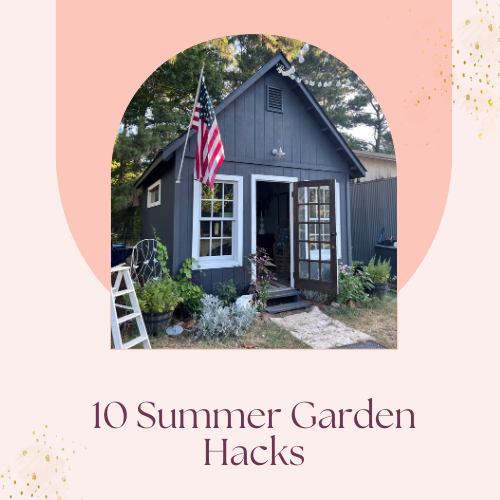10 Zone 8b Garden Hacks

Save an empty pump bottle. Fill it with mineral oil and use a rubber band to attach a small wire brush to it. Every time you put away your garden tools give them a small squirt of oil and a quick scrubbing. Spending a quick minute doing routine maintenance on your tools will make them last longer, perform better and save you money.
Use aluminum foil as a collar around young tomatoes, zucchini squash and cucumber plants. Bury the foil 1-2” in the soil around your tender transplant. This protects them from cutworms, squash bugs and cucumber beetles. Planting your squash early (April 1) will ensure an abundant harvest before the SVB hatches in mid-June for zone 8b gardens.
Keep a small spray bottle handy filled with 2 tbsp. dish soap, ½ tsp of cayenne pepper and water. As you walk around your garden, keep an eye open for pests. Give leaves a squirt underneath to eliminate aphids, cutworms, cucumber beetles, squash bugs and any other pest trying to make a home on your lovely vegetables.
To repel crows and other birds from your fruit trees tie Mylar balloons to a few limbs. The flashing light reflected off the silver balloons frightens the birds and the irregular movement in the wind confuses them.
Sprinkle vermiculite on seedlings to prevent dampening off
Using an old sifter spread diatomaceous earth around doorways and fence posts to deter carpenter ants from damaging wooden structures.
Let a few hens forage in your garden. Keep a watchful eye on them and shoo them away from your vegetables as needed. One or two chickens can clean up a garden patch of pests that you might not even know are present.
Use plastic cups or plant containers spray painted yellow and smeared with tanglefoot or petroleum jelly to trap pests. Squash bugs and other pests are attracted to the color yellow and will fly into the gooey substance expecting to feast on your garden vegetables.
Use surveyor tape to tie up tomatoes and other vining plants. The tape stretches and does not require scissors or a pocket knife to cut as twine does. It is also inexpensive and can easily be removed from trellises at the end of the season and tossed in the trash. I use a kitchen torch to melt it off my structures.
When directly sowing seed, press your hand or boot into the soil and sprinkle the seed in the depression. Cover if the seed requires darkness to germinate and write the seed name on a plastic picnic knife pushed into each depression to mark what you sowed. Do this all the way down the row and you will find it much easier to remember where you planted seed. It will also help when it’s time to weed so you don’t mistake a seedling for a weed sprouting.
Get my Free Garden Journal



